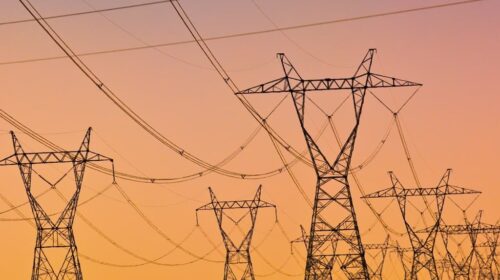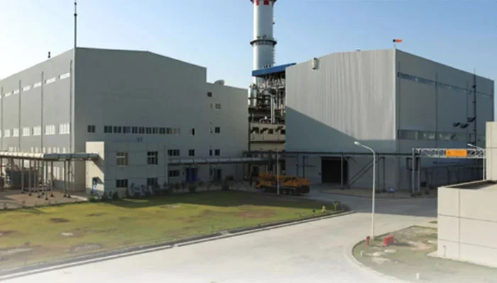*There is a need to attract more investments into transmission system, especially under CPEC
The aphorism ‘supply creates its own demand’, often attributed to economist Jean-Baptiste Say, encapsulates a fundamental principle of classical economics.
This notion, known as Say’s Law, faced criticism during the Great Depression of the 1930s, when supply exceeded demand, leading to economic downturns. Similarly, Pakistan’s electricity sector is experiencing a power sector depression due to overexpansion and underutilisation of capacity, primarily fuelled by imported fossil fuels, thanks to poor planning and demand estimation.
The demand for electricity is, by nature, a derived demand, meaning it is contingent upon the demand for the services that electricity powers. Thus, a country’s economic policy plays a pivotal role in shaping the demand for electricity. Ideally, such policies should position electricity as a catalyst for the nation’s production functions, complementing other essential inputs like land, labour, capital, and organisation to boost overall output.
However, when there is a lack of integrated planning, or when the expansion of electricity supply is not aligned with the industrial mix or coordinated with the expansion of industrial capacity, imbalances are inevitable.
In fiscal year 2023, Pakistan’s total electricity consumption, as measured in terms of sales, amounted to 112,891 GWh, with 97,337 GWh coming from ex-Wapda distribution companies (Discos) and 15,554 GWh from K-Electric. This represents a decline from the 124,629 GWh consumed in FY2022. This decrease in consumption is not only due to affordability issues but also to a range of demand-side challenges that need immediate attention.
One such challenge is the ‘unproductive demand conundrum’, where the generation mix is heavily skewed towards imported fuels, yet the majority of consumption emanates from the residential sector. This is contrary to global trends, where countries like India and China have a higher share of industrial demand compared to residential demand.
According to Power System Statistics 2023, 47 per cent of electricity consumption comes from residential load. The ‘seasonality conundrum’ arises from this unproductive demand, as residential demand peaks in summer due to cooling needs, while industrial production remains constant throughout the year, resulting in a disconnect with the national grid. Consequently, winter demand is only half of the summer demand.
A country’s economic policy plays a pivotal role in shaping the demand for electricity.
In winter, the computed peak demand is around 12,000 MW while the recorded peak is about 8,000 MW. Whereas in summer, computed demand is 30,000 MWs, while the recorded peak is 12,000 MW. This shows 16,000 MW of cooling load primarily generated from residential consumers due to poorly designed building structures and inefficient appliances.
The ‘rooftop solar conundrum’ is another issue, where increased tariffs have spurred demand for rooftop solar panels, leading to a decline in demand from the national grid.
These challenges contribute to the ‘capacity payment conundrum’, where generation capacity exceeds demand, and take-or-pay power purchasing agreements obligate the government to make payments even when plants are not generating electricity. These capacity payments, essential for the operational viability of power plants, become burdensome due to the low demand for electricity, which in turn prevents an increase in energy generation.
The ‘transmission conundrum’ underscores the structural challenges in Pakistan’s power infrastructure. The grid is organised along a south-north axis, connecting economically distinct regions. The southern region, stretching from the coastal areas of Sindh and Balochistan to the Guddu thermal power station, includes a diverse mix of electricity suppliers such as K-Electric, Hesco, Sepco, and Qesco.
In contrast, the northern region, extending from Gepco to Gilgit-Baltistan, is served by Iesco, Hazeco, and Pesco. In FY22, the south consumed about 27,132 GWh, decreasing to 26,057 GWh in FY23. Power consumption patterns reveal a ‘consumption conundrum’.
In 2022, the northern region consumed approximately 24,389 GWh, dropping to 21,992 GWh in FY23. The central region, spanning Guddu to Gepco and including Mepco, Fesco, Lesco, and Gepco, consumed 71,721 GWh in FY22, decreasing to 64,939 GWh in FY23.
The geographical disparity in power generation and consumption leads to regional imbalances. The north is rich in hydro resources, the south boasts coal, nuclear, and wind plants, while the central region, being the most urbanised, generates the majority of the electricity demand with imported gas/ coal-based power plants. The heavy reliance of the power generation mix on fossil fuels exacerbates the ‘north-south generation conundrum’. Most fossil fuel-based power plants are located in the north, except for a few like those in Kot Addu and Port Qasim. The region also hosts major hydro dams like Tarbela and Mangla.
However, the bulk of nuclear power generation is situated in the south. During winter, when hydro dams reduce their output, the central and northern regions increasingly depend on electricity from the south. This dependency, coupled with the dated transmission system’s frequent tripping, leads to nationwide blackouts, especially under foggy or smoggy conditions, creating a ‘south-north barrier’.
Keeping these conundrums in view, it can be said that electricity supply does not create its own demand. One, it should be integrated with economic policy; two, expanding efficient transmission is as important as the building power plants for political capital; three, the demand mix matters — industrial demand should be greater than the residential demand.
In light of the challenges facing Pakistan’s electricity sector, a comprehensive approach is essential. One critical step is the formulation of an ‘Indicative Demand Capacity Expansion Plan’ with an innovative tariff regime, which should complement the existing Indicative Generation Capacity Expansion Plan and Transmission Capacity Expansion Plan.
The IDCEP should be anchored in long-term economic planning with a focus on export-led growth, ensuring that the expansion of electricity demand is aligned with the broader economic objectives and industrial development strategies.
Secondly, a ‘sectorial diversion strategy’ to increase electricity demand can be implemented by redirecting surplus power towards industry, household cooking, and electric vehicles, particularly focusing on electric mass transit systems.
Finally, there is a need to attract more investments into the transmission system, especially under CPEC, to enhance the network’s capacity, efficiency, and reliability.





